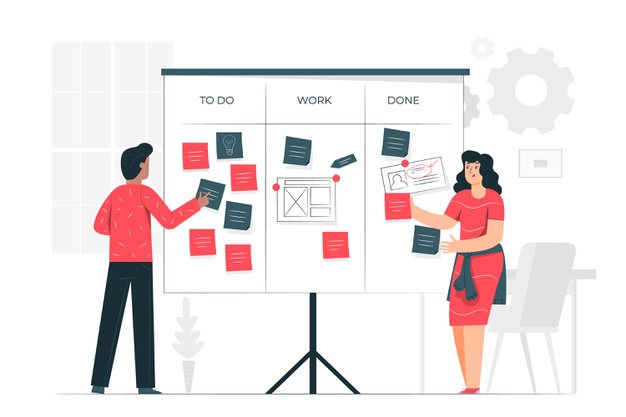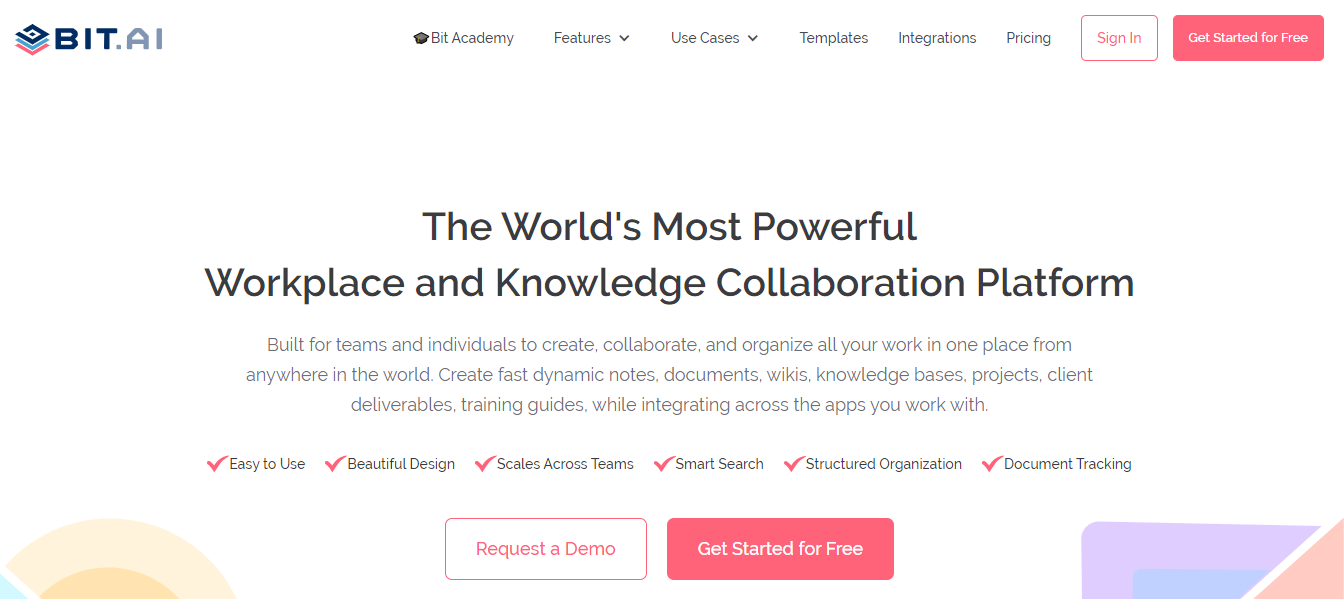Working with clients, partners, and other external partners is never easy. No matter how hard you try, miscommunication, presumptions, and confusion can always find their way in. However, when working with high profile clients or high budget projects, even the smallest mistake could lead to disastrous as well as costly results. This is why project managers rely on documents like the project scope to get work done efficiently.
Often project managers know what they want in terms of high-level project deliverables, but they fail to get down to the nitty-gritty stuff.
In order to successfully finish projects on time and deliver what is required, smart project managers rely on a project scope document to make sense of the chaos and bring a systematic approach to project execution.
The project scope lays the grounds of a project, it defines exactly what needs to be done, by whom, and by when. This ensures that everyone- all vendors, clients, partners, and stakeholders- who are part of the project are on the same page with what is expected and on board with all its aspects. But let’s not get ahead of ourselves just yet. Let us explore in depth what exactly a project scope involves and how you can create one for maximum efficiency.
What is Project Scope?
The project scope document is written prior to the commencement of a project, detailing what needs to be done. It’s like an agreement between two parties on what needs to be done in a project, by whom, and by when. The project scope document helps teams successfully implement a project by taking a 360-degree look over it.
The scope defines what needs to be included in the project execution-requirement, deliverables, timelines, budget, statement of work, and more. Since the scope is used when working with outside clients, it’s crucial to make it as clear as possible, using easy to understand language and detailed information regarding deliverables.
Project scope, also known as a scope statement, defines the boundaries of the project, establishes responsibilities for each stakeholder, and puts procedures in place for project execution as well as approval.
Why is a Project Scope Document Important?
Creating a project scope document prior to the commencement of a project is crucial to make sure the team and other stakeholders are on the same page regarding the goals, budget, and deliverables of the project. All the parties involved (clients, vendors, contractors, agency, etc.) should have the same vision concerning the project so that there’s no ambiguity and no costly do-overs at the end.
 By documenting every project need beforehand- the timelines, task allocations, deliverables, terms & conditions, budgets, etc. everyone knows what needs to be done, why it’s important, and when to get it completed. Such documents are a lifesaver for project managers who use it to communicate intricate details of the project and ensure that all moving parts of the project are thought through. It helps every stakeholder to visualize the project clearly from start to finish.
By documenting every project need beforehand- the timelines, task allocations, deliverables, terms & conditions, budgets, etc. everyone knows what needs to be done, why it’s important, and when to get it completed. Such documents are a lifesaver for project managers who use it to communicate intricate details of the project and ensure that all moving parts of the project are thought through. It helps every stakeholder to visualize the project clearly from start to finish.
All in all, a project scope:
- Describes what the project entails so that all stakeholders know exactly what is expected of them and what the final product should look like.
- Provides a roadmap that project managers can use to schedule tasks, work, and budget accordingly.
- Keeps the team focussed on the objectives and helps them not to stray away from what is expected.
- Keeps things under control and under budget.
Read more: What is the Scope of Work Document & How to Create One Effectively?
How to Write a Project Scope Document Effectively?
Every project is different, depending on its type, opportunity, budget, timeline, etc. However, the basic structure of every project scope remains the same. Here are some key areas you need to cover in order to make an impactful project scope and answer all the potential questions or issues other stakeholders might have.
Here are some of the key points you should incorporate in your project scope document:
1. Define project needs and scope
Understanding the what and why of the project is the first step to designing a project scope. When you clearly know what you need from a project, you are better able to articulate it in your document, and as a result, better explain it to other stakeholders.
 What are the features and functionalities that need to be developed for the product? Are there any special requests? All such questions need to be clear in your mind before you start documenting a project scope.
What are the features and functionalities that need to be developed for the product? Are there any special requests? All such questions need to be clear in your mind before you start documenting a project scope.
2. Desired goals and project objectives
The next step would be to describe the goals and objectives of the project in detail. Explain what the project will ultimately achieve and who is it for? Make sure you are able to articulate what a successful execution of the project looks like, including metrics wherever possible.
Describe how the project relates to your overall business mission, strategy, department goals, etc. It’s helpful for stakeholders to understand how the project translates and contributed to the bigger picture.
To make this process easier for you to write down, as well as others to comprehend, make a list of SMART goals and objectives for the project. The goals should be Specific, Measurable, Achievable, Relevant, and completed within a specific Timeframe.
Specific– Explain exactly what needs to be done. This section includes the what, why, and how part of the project. Being specific ensures there’s no misunderstanding or confusion.
Measurable- Make sure the goals you are setting for your team are measurable. This keeps the team accountable and helps you measure success accurately.
Achievable –This is the section where you need to take a step back and decide whether the goals you have set are achievable within the timeframe you have set and with current resources at hand.
Relevant – Why is the project relevant to you? Is it really necessary? Is it worth the time and effort? Does it align with your other business/personal goals?
Time Frame – Can your project goals and objectives be met within the allocated time frame? Does it have a realistic deadline?
Read more: Waterfall Project Management: What, Why, and How?
3. Roles of all key stakeholders
Next up, define the roles and responsibilities of key stakeholders of the project. Include each person’s full name, their position, their department, and the role they will play in making the project a success.
 When everyone knows what exactly is expected of them, they are bound to be more accountable and sincere in their work. Accurately assigning roles is crucial to remove all sorts of confusion during the execution phase and reduce ambiguity.
When everyone knows what exactly is expected of them, they are bound to be more accountable and sincere in their work. Accurately assigning roles is crucial to remove all sorts of confusion during the execution phase and reduce ambiguity.
Read more: What is Project Status Report Documentation?
4. Create a Work Breakdown Structure (WBS)
Projects often involve too many moving parts that it gets impossible to accurately keep an eye on things. To efficiently manage a project and its deliverables, project managers often divide the project work into smaller and more manageable elements, referred to as a Work Breakdown Structure or WBS in short. A project management plan, the scope of work documents, etc. are all part of the work breakdown structure and helps smooth execution of the project.
5. Possible assumptions or constraints
Add any constraints, limitations, or assumptions you have incorporated while designing the project scope. The team working on the project need to be aware of the possible challenges they can face in the future and how to navigate such a scenario if it occurs.
 Technological failures, internal/external environmental changes, lack of resources, are all good examples of constraints a project might face in the future. Being aware of all the limitations allows your team to take on these challenges head-on and emerge victoriously.
Technological failures, internal/external environmental changes, lack of resources, are all good examples of constraints a project might face in the future. Being aware of all the limitations allows your team to take on these challenges head-on and emerge victoriously.
6. Validating scope
Once you are done with your project scope, it’s important to make sure things are on the right track. Validating scope involves inspecting and reviewing the deliverables to ensure everything is turning out to be as expected. Either the deliverables are accepted or the project manager requests further revisions.
Create Project Scopes The Right Way With Bit!
For creating project scope documents, you need a proficient tool that can help you create, share, and collaborate with stakeholders and get work done efficiently. This is where Bit comes in!
 A must-have tool for project managers, Bit.ai is an all-in-one document collaboration platform designed for the modern-day workplace. Bit provides a commonplace for employees to simultaneously collaborate and manage projects, create client-facing material, brainstorm, share meeting agendas, create proposals, and most importantly, share knowledge. It also has a content library where you can save all your images, files, and digital content and access them easily, making your workflow smooth as ever!
A must-have tool for project managers, Bit.ai is an all-in-one document collaboration platform designed for the modern-day workplace. Bit provides a commonplace for employees to simultaneously collaborate and manage projects, create client-facing material, brainstorm, share meeting agendas, create proposals, and most importantly, share knowledge. It also has a content library where you can save all your images, files, and digital content and access them easily, making your workflow smooth as ever!
Simply create a workspace, add your team members, and start creating your workplace documents like project scope quickly! You can further share these documents with external clients, partners, agencies, etc., and get detailed insights on how they interacted with your documents! Cool, right?
Read more: What is Project Planning: A Step by Step Guide!
Writing a Project Scope: Best Practices
By now you must be itching to try out Bit and create your project-related documents. But before you go, here are some tips to keep in mind while creating project scope documents!
1. Don’t Rush: Don’t rush to process of creating a project scope document. Give yourself and your team ample time to think through each step of project execution and come up with a plan without any hurry.
2. Be pragmatic: Be realistic about the project you’re about to execute. Conduct your due diligence and research if your project is really viable and can be accomplished within the proposed timeframe and budget.
3. Preparation is key: Study what you’re proposing. Research every possible issue or challenges your project might face in the future and note them down.
4. Be open to ideas: Be open to suggestions and new ideas from external stakeholders. It will only bring your team closer.
5. Make it a team effort: Use a document collaboration tool like Bit to bring your whole project team together in one workplace and design the project scope together. With everyone chipping in, we’re sure your scope would be nothing short of awesomeness!
Final Words
Project scope is a vital document that needs to be taken with utmost seriousness. Smart project managers know that without a proper scope document, your project is simply setting itself for failure. So, what are you waiting for? Gather your team around and start planning your project scope today! If you need any additional tips or want to learn more about how Bit can help your projects, feel free to tweet us @bit_docs. Good luck!
Further reads:
How to Write a Request for Proposal (RFP)?
Writing Vision Statement: Definition, Examples, and Best Practices!
How to Create an Effective Operational Plan for Your Business?
How to Create a Project Management Communication Plan?
How to Write a Project Charter Document?
Scope of Work vs Statement of Work: Differences and Examples



